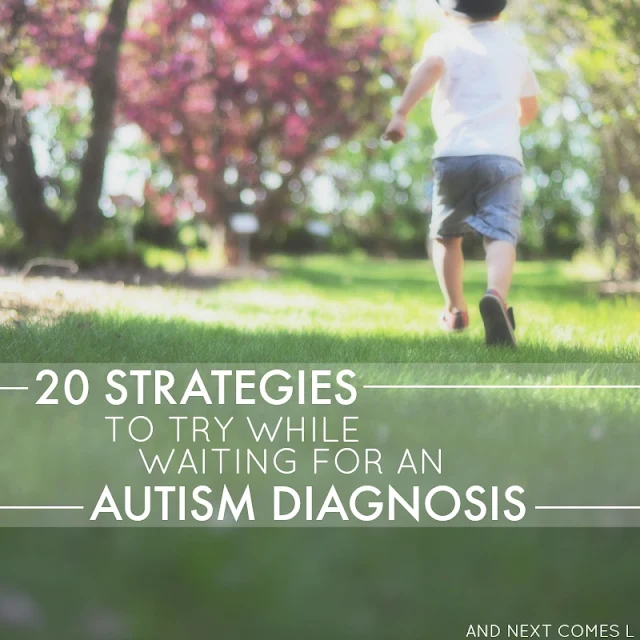She agrees to put in the referral and casually mentions to me that it may take a few months. It was a vague response. However, I would soon learn that those few months would actually mean 12-18 months until the actual assessment and would include months of enduring wait list after wait list. I didn't want to just wait it out for those 12-18 months.
My son needed help. And, whether I wanted to admit it or not, I needed help.
I started researching practical strategies that we could try while we waited for the diagnosis and started implementing anything we could think of. Some strategies worked flawlessly, while others failed miserably. And soon we would have an entire arsenal of tools at our disposal.
So if you find yourself waiting to have your child diagnosed with autism, or even sensory processing disorder, then these 20 strategies may be just what you need in order to get more good days and less bad days. They may be just the strategies you need to fill the gap until you can get professional help and services for your child.
These strategies are also great to maintain even after you receive your child's diagnosis and they are by no means an exhaustive list of strategies to try.
This post contains affiliate links.
20 Strategies to Try While Waiting for an Autism Diagnosis
1. Start a daily visual schedule to establish a routine. Our free printable visual schedule is great for helping kids who struggle with transitions.2. Read! Learn everything you can about autism and sensory processing. Start with these:
- The Best Books About Autism
- The Best Books About Sensory Processing
- 10 Encouraging Reads for Autism Parents
4. Find a support group, either local or online. Here's a list of Facebook support groups for special needs parents.
5. Have a child who bites or hit others? Try this easy high five idea as a substitution or try out one of these oral motor activities to reduce the biting behavior.
6. Write a social story for something that you child is currently struggling with (here's an example). I love these tips for writing your own social stories.
7. Make a calm down jar. You can read about why calm down jars work from an occupational therapist's perspective, but here are some of our favorite calm down jars:
- 6 Ways to Make a Calm Down Jar from Preschool Inspirations
- LEGO Calm Down Jar from Lemon Lime Adventures
- Car Themed Calm Down Jar from Frogs and Snails and Puppy Dog Tail
9. Follow accounts on Instagram that are written by actually autistic individuals or are run by neurodiversity-affirming OTs or speech therapists.
10. Incorporate your child's special interests into other activities and tasks.
11. Print off a calm down poster to help guide your child through their meltdowns. Here are a couple of free posters:
- 9 Calm Down Ideas for Kids Poster from Childhood 101
- Calm Down Yoga for Kids Poster from Childhood 101
- 5 Steps to Managing Big Emotions Poster from Childhood 101
13. Install swing hooks in your house and start making swings part of your child's daily routine. See how our swing hooks are installed here.
14. Invest in some good sensory toys and tools. If you need some ideas, then start with these:
- Oral Motor Sensory Toys & Tools
- Visual Sensory Toys & Tools
- Olfactory Sensory Toys & Tools
- Auditory Sensory Toys & Tools
- 25 Sensory Hacks for Vestibular & Proprioceptive Input
16. Install some speech therapy related apps and/or some occupational therapy related apps on a mobile device. Or search for more specific apps with this awesome Tech Finder from Understood.org. You can find all of our favorite speech and social skills apps here.
17. Make a travel sensory diet bag for on the go. Keep it in the car or in your purse so that it's always handy!
18. Print off these calming strategies cards to help your child self-regulate and learn about emotions.
19. Start thinking about the social skills that your child needs help with and start collecting resources. If you are interested in working on turn taking, then try some of our favorite board game suggestions. Here are a couple of ideas to get you started:
- 5 Playful Ways to Work On Listening Skills & Following Directions from Playing with Words 365
- Free Social Skills Calendar from Speechy Musings
- The Social Skills Picture Book
Other Ideas You'll Love
Free Printable Daily Visual ScheduleHeavy Work Activities for Kids {Free Printable}
Oral Motor Activities for Kids {Free Printable}



